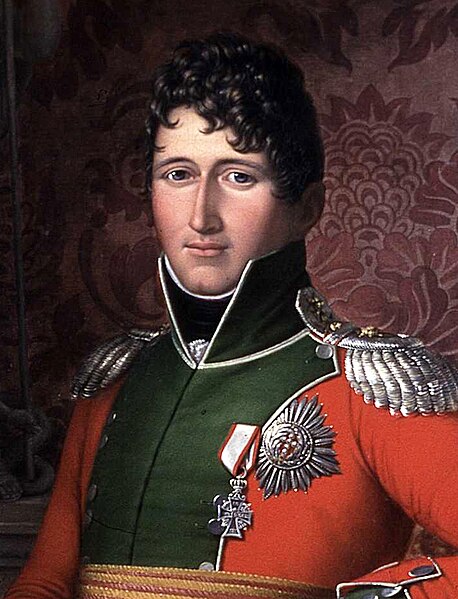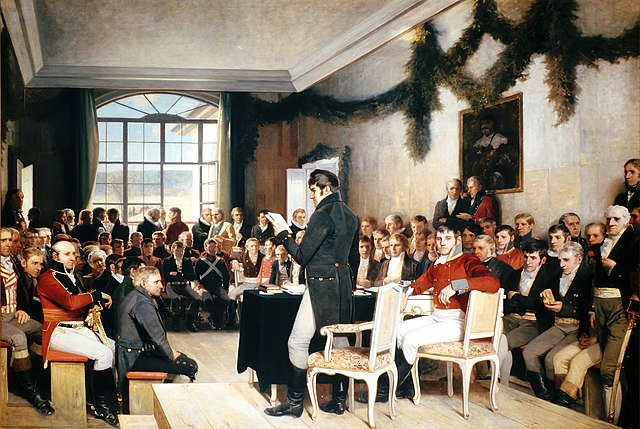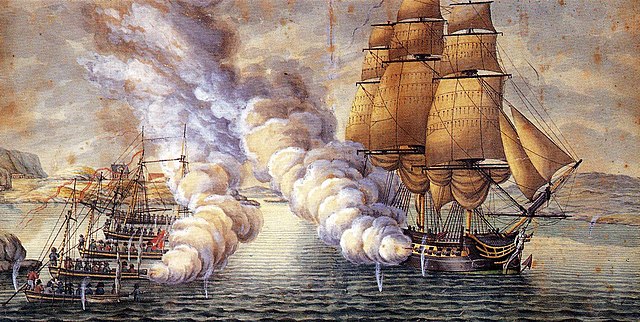In 1814, the Kingdom of Norway made a brief and ultimately unsuccessful attempt to regain its independence. While Norway had always legally been a separate kingdom, since the 16th century it had shared a monarch with Denmark; Norway was a subordinate partner in the combined state, whose government was based in Copenhagen. Due to its alliance with France during the Napoleonic Wars, Denmark was forced to sign the Treaty of Kiel in January 1814 ceding Norway to Sweden.
Christian Frederick in 1813
Artist's rendition of the Norwegian constitutional assembly in 1814
Christian Magnus Falsen, credited as being the constitution's father
Charles John staunchly opposed Norwegian independence, only to offer generous terms of a union.
Denmark–Norway was a 16th-to-19th-century multi-national and multi-lingual real union consisting of the Kingdom of Denmark, the Kingdom of Norway, the Duchy of Schleswig, and the Duchy of Holstein. The state also claimed sovereignty over three historical peoples: Frisians, Gutes and Wends. Denmark–Norway had several colonies, namely the Danish Gold Coast, the Nicobar Islands, Serampore, Tharangambadi, and the Danish West Indies. The union was also known as the Dano-Norwegian Realm, Twin Realms (Tvillingerigerne) or the Oldenburg Monarchy (Oldenburg-monarkiet).
Artwork depicting ships passing by the city of Helsingborg, which overlooked the Oresund
Christian IV of Denmark-Norway
Naval battle between the frigate HMS Tartar and Norwegian gunboats near Bergen in 1808







